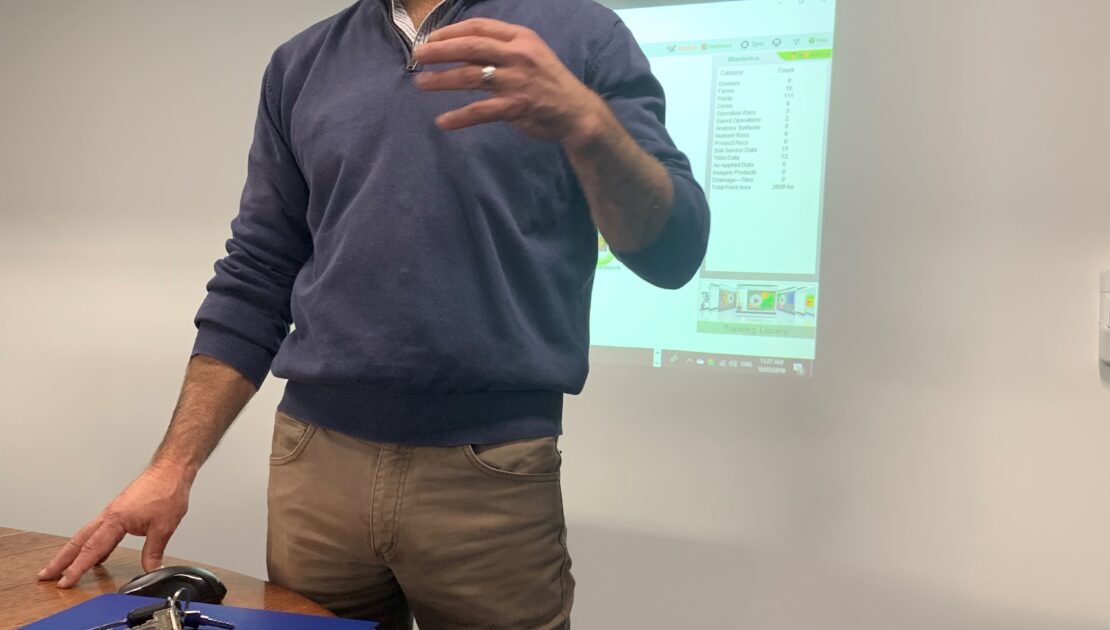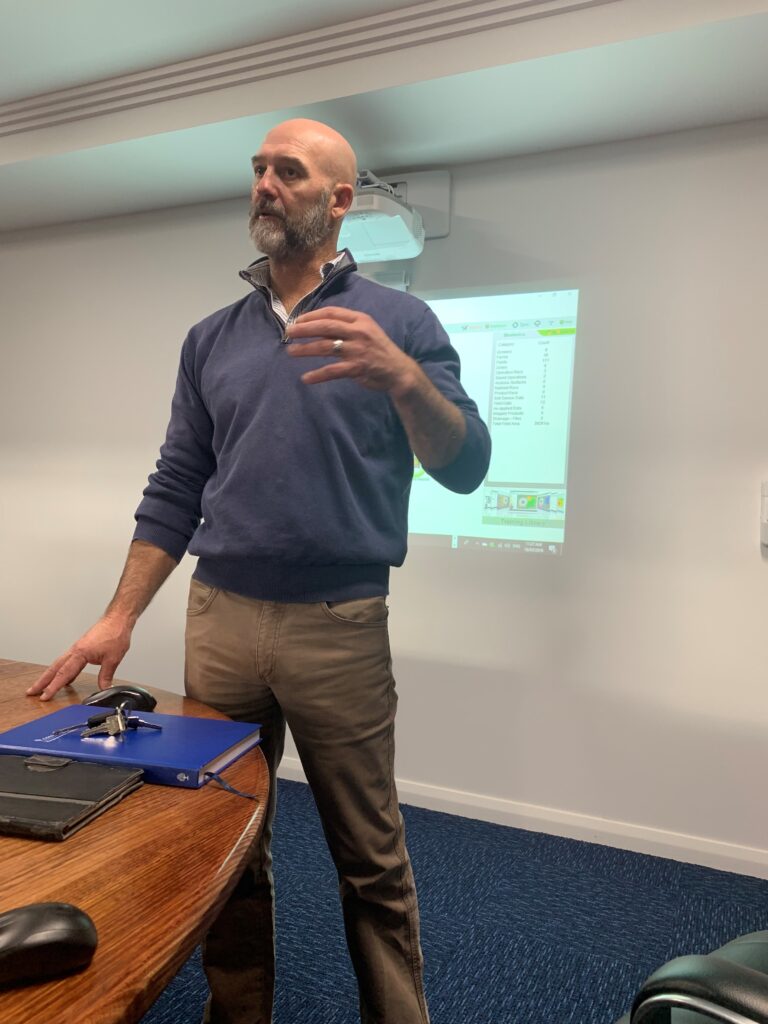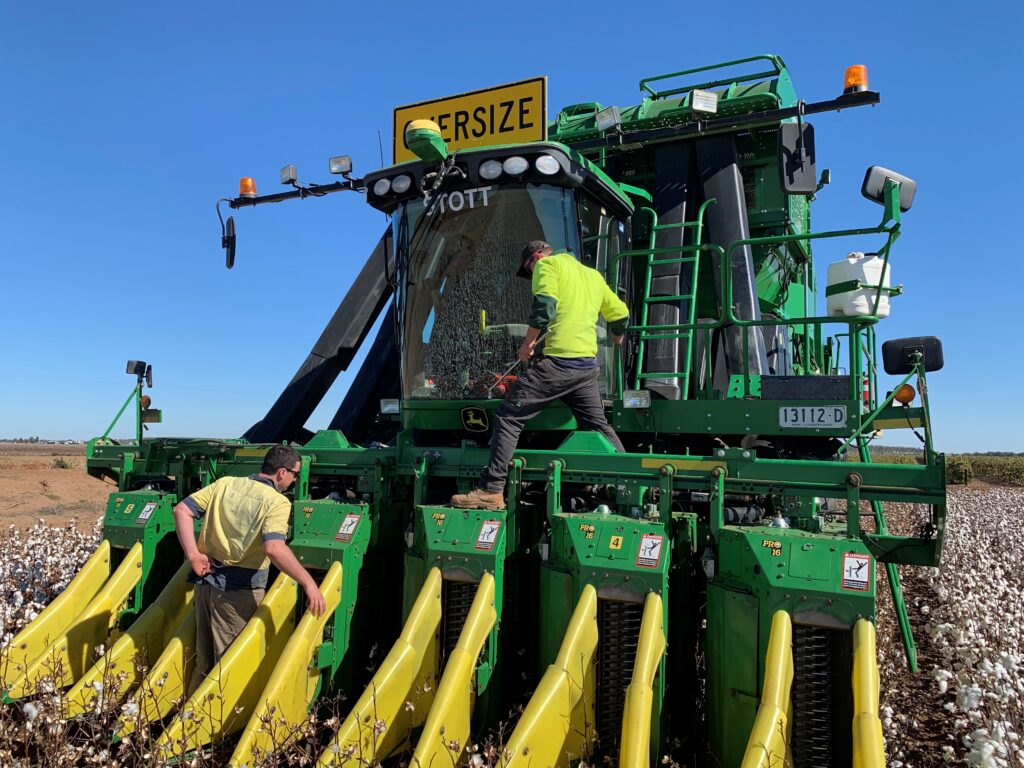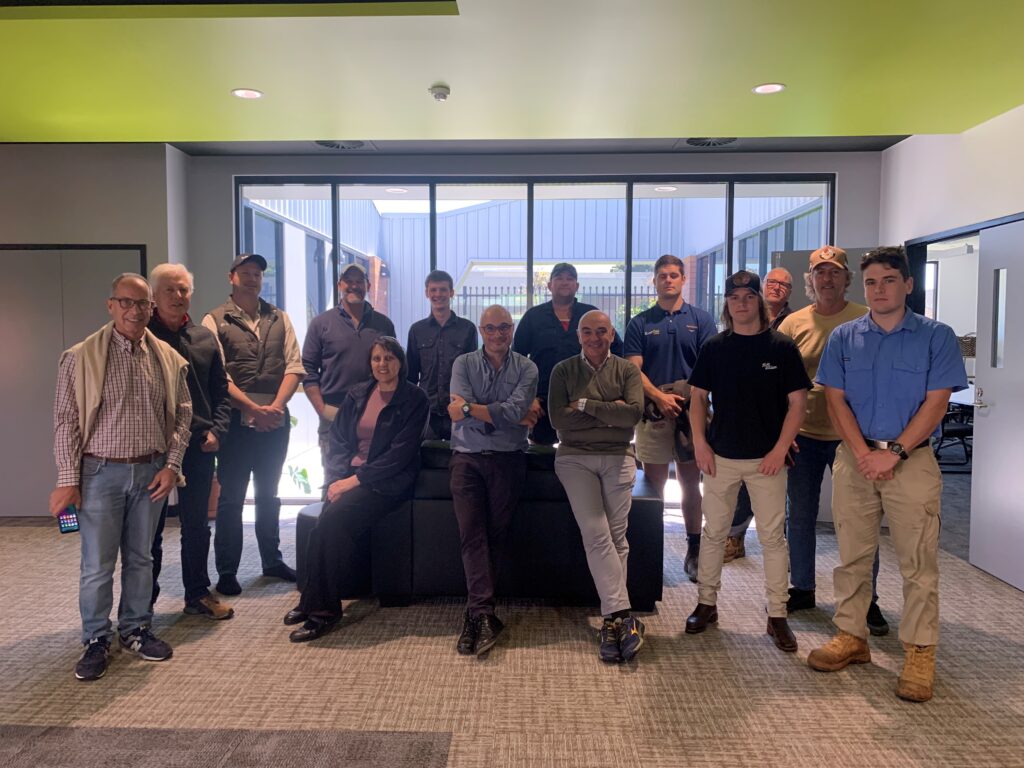Agricultural Technology in Australia; In conversation with Anthony Rudd

Agricultural Technology in Australia; In conversation with Anthony Rudd
- January 31, 2023
- UNSW
- Blog, Evidenziato
- No Comments
COALA prides itself on its connection with on-the-ground experts, and Anthony Rudd is a perfect example of this role. We spoke with Rudd about agricultural technology (AgTech) in Australia and how Aussie growers use this agricultural data. When Rudd speaks, you can tell he lives and breathes Australian agriculture. Rudd is the managing director of I-AG products limited, an agricultural data management company that supports agronomy and growers in Australia.
This year (2022) has presented significant challenges to the farming community. And Rudd is proud that the technology and data I-Ag manages to contribute to assisting growers and agronomists in making the best decisions possible for their practice. These advancements are critical tools in these unprecedented and challenging conditions.

Rudd has worked in the AgTech space since its implementation in Australia in the early 2000s. He studied agribusiness and supply chain at university and progressed to work at John Deer – an agricultural machinery company – as an integrated solutions specialist. In 2016, Rudd stepped out from John Deer to start I-Ag to meet the growing market demand for AgTech in Australia.
“I-AG specialise in agricultural data management and field data capture to supply for agronomy purposes. We deliver what we think is the best version of tech that’s out there in that massive minefield that is ag tech. The [AgTech] industry is getting larger and larger as we speak. In 2016, I partnered with a large grower in Griffith, Gavin Dal Broi, and we wanted to upscale and bring better service to our clients. We work on the ground in the field with our growers.”
Dal Broi is a second-generation large-scale farmer located southwest of Griffith. Rudd and Dal Broi have grown I-AG’s business to “cover about 75,000 hectares from the Victorian border up to the Queensland border.”
“We’re also managing data for contractors in the cotton and rice sectors where industry push to be more transparent and have more traceability demanded different levels of data supply.”
I-AG and COALA
“So, I suppose that brings us to our involvement with the COALA project.” Rudd guides the conversation to explain how his curiosity about the potential of space technology brought him to engage with COALA. “What got me first involved was the irrigation side of things. The multispectral imagery that the COALA project provides is highly interesting; I think it’s probably a better tool than what we’re using now. Especially when you combine the analysis.”
Partnering with IREC, Rudd facilitates learning opportunities for growers. IREC is an independent organisation established in 1939 that promotes research and extension projects, investment, new technology and agricultural policy.
“We do a lot of work with the Irrigation Research and Extension Committee in the Riverina. We’ve facilitated multiple training days for growers in that data management space. We also ran our My Digital Farm Pilot Project, where we took six or seven growers and worked with them for two years from scratch, helping them develop their digital farming process.”
Rudd learnt more about growers’ attitudes and needs from these pilot projects. “We realised we confrmed what we already knew about growers’ attitudes and issues with digital farming and data management. And there are some big gaps. So IREC agreed to partner with COALA and bought me on to run the project for them in that capacity, which has been fantastic. The project itself is extensive. And I think as we move forward and as a tool, it could very well be a very important, very useful tool for growers.”

AgTech and Precision Agriculture
Rudd is at the forefront of Australia’s rapidly growing AgTech industry, which is increasing to manage limited resources like nutrients and water. “Irrigation management it’s probably becoming the fastest-growing agriculture industry. Technologies have been developed in the last two years. I think there’s been a lot of investment from the government to help the industry develop more products. Obviously, water security is a fairly hot topic and will continue to be as we move forward and as our population grows, and we need to do more with less. These efficiencies are essential to running a successful agribusiness in irrigation.
There has been a shift in the market, and I-AG has recognised the value of precision agriculture for Aussie growers. “When we look at the input management part of the COALA project, probably 12 months ago wasn’t revolutionary. But now that our input costs for urea and application have quadrupled in price. There is a much larger focus on how we go about applying and when and why. So, in the past, the consensus has been to throw as much fertiliser as we possibly can, and we’ll put a bit more on if we were not sure. The COALA project, as far as being able to measure plant need via that imagery on a large scale or field by field, is really important; it is unique to the COALA project.”
The need for precision directly translates to irrigation management. “The same on the irrigation side of things, especially on a large scale. The subsequent spectrums delivered by the COALA project and the analysis on the back of that are really important. That’s, that’s probably where its most unique offer is. COALA can build and analyse that spectral data and create a tool that’s actually worth using.”
Translating European Technology into an Australian Context
The strengths of the COALA project are based on the ability to translate European technology into an Australian context. “So, we talk about the scale. And obviously, there’s a difference in scale between here and in Europe. But I think the fundamentals are generally the same. Moving forward with the project, the ability for it to be flexible is key. The analysis is interesting because it’s the same regardless of size. Things are generally the same whether you’re looking at 10 acres or 10,000. In Europe, we’re looking at more than 80 hectares, 80 acres per farm.”

While the fundamentals for farming are the same between Australia and Europe, the drivers for irrigation differ, primarily due to the climate.
“In Europe, the driver may be timing the plant growth stage, whereas here [in Australia], it’s more, is there rain coming? How quickly can I get across everything before the rain comes? And certainly, with irrigation, you’ve got a completely different situation in Europe where much of the irrigation is pressurised. In Europe, there are many technologies like pivots and laterals, whereas we’re looking at flood irrigation here. And the largest driver here really is when can I get the water? How much can I get? On what day? So when you’re looking [at Europe], you might be looking at a few 100 megalitres, whereas in Australia, we’re looking at a few 1000 megalitres. The principle is the same, though the drivers differ a little.”
The partnership between COALA and I-Ag helps answer some of these questions for growers in Australia.
“Certainly, the COALA product and project does that. When we’re talking about those sorts of irrigation scenarios, NDVI biomass, as we move forward, they’re permanent records now. So once we’ve captured and pooled the data together for a cropping year, we do that for two or three years, and we can start to model things. We’ll never be able to dig into what’s happened this year. But we can certainly look at what we deem simpler previously, as in crop size, hectares, what’s coming as far as weather is concerned, water availability, nutrient availability, and application. In the industry as a whole, we’ve really just scratched the surface at the moment.”
International Collaboration
COALA’s partners in Italy were able to attend site visits in Australia for the first time since 2020. For Rudd, this is a huge step forward in the project. “I can’t stress how important it is for those on-the-ground case studies; we’ve facilitated many of them in the past.” Following up on these case studies is important to have the maximum output from work. “Where did they go? Where’s the data? Where’s the result? All the guys to come out and ground truth the product, it’s extremely important that they did that. And they need to keep doing that. And they need to be here at different stages of the year. They need to see what’s happening. When we irrigate, when we’re harvesting, when we’re planting. There’s no substitute for eyes and work boots on the ground. So what’s pleased me the most with the COALA project is the engagement of those key people.”

There are challenges in introducing a product to the market, but this is where Rudd says COALA has provided some opportunities. “When you look at selling a product or pushing a product it’s that internationally developed; then there’s always a struggle from local [Australian] market. But there’s also the upside of that is the experience it’s gained from other regions of the world. And the team are COALA certainly has that level of intellect within their sector of that project that is impressive. They really know what they’re doing. I’ve learned a lot, and for me personally, that’s been a great experience. The point of view [between Europe and Australia] is different. The optimism the people within the COALA project show is quite impressive to me. It’s a breath of fresh air.”
COALA’s partnering with Aussie organisations has allowed the products produced by the project to be industry relevant. In addition, having people like Anthony Rudd on the COALA team gives the project a genuine connection to the Aussie outback and Australian growers.
